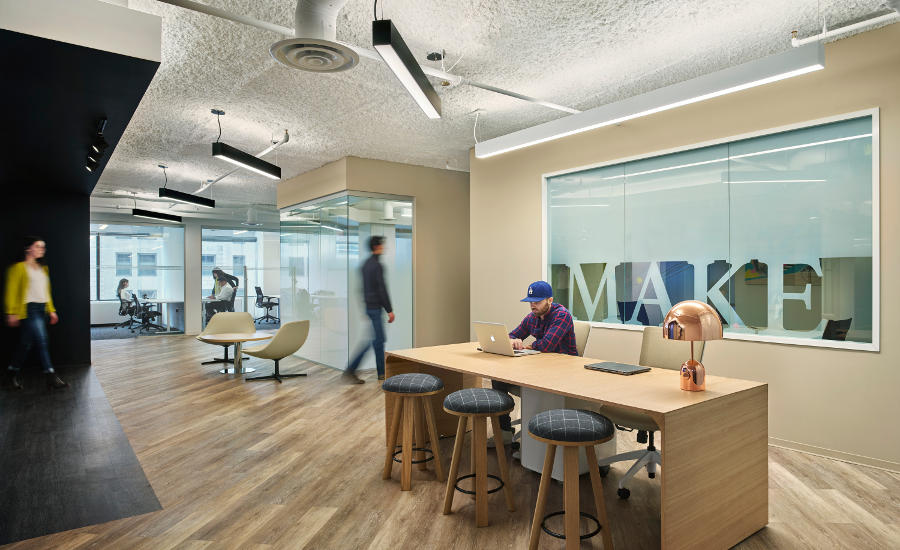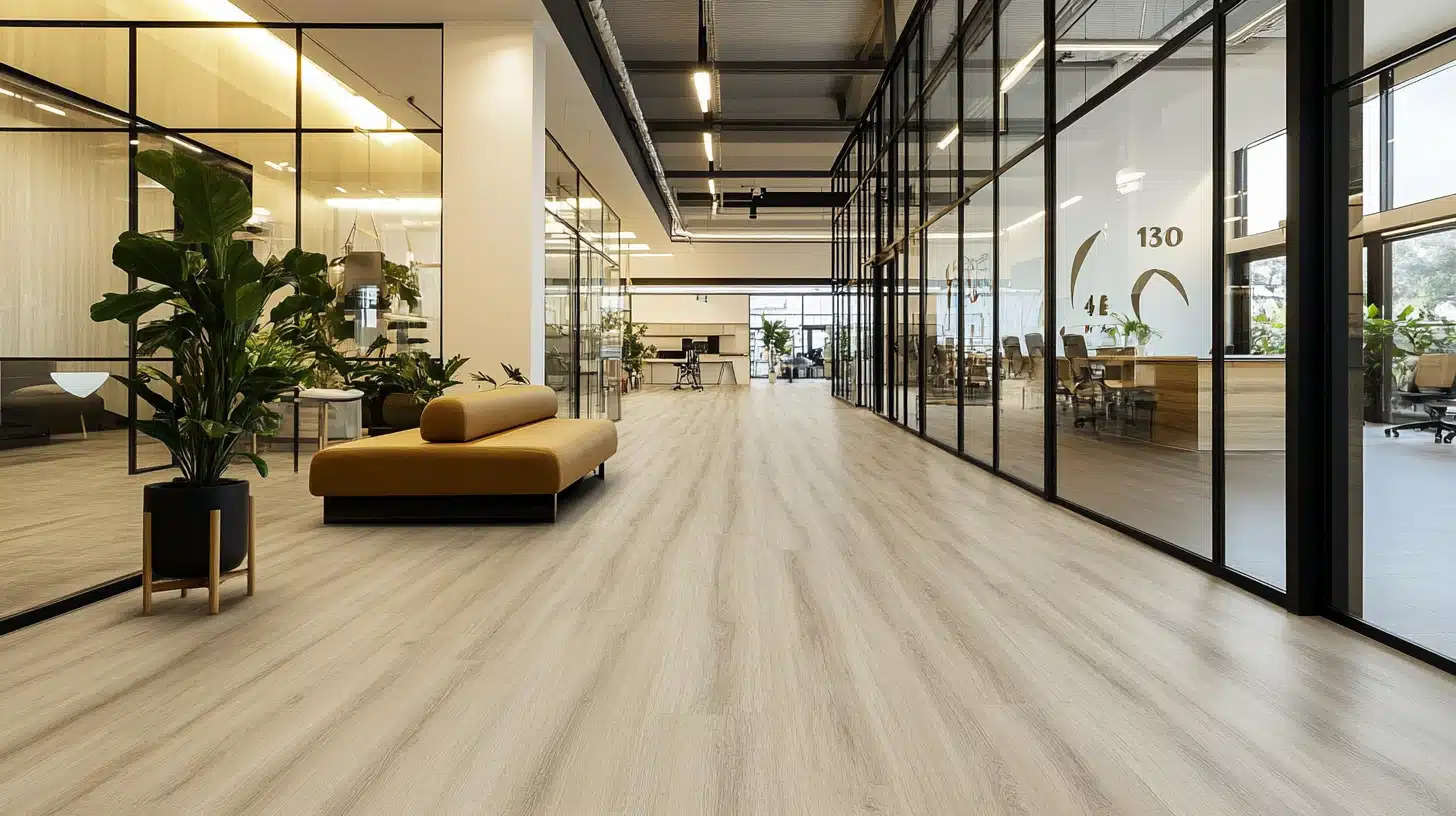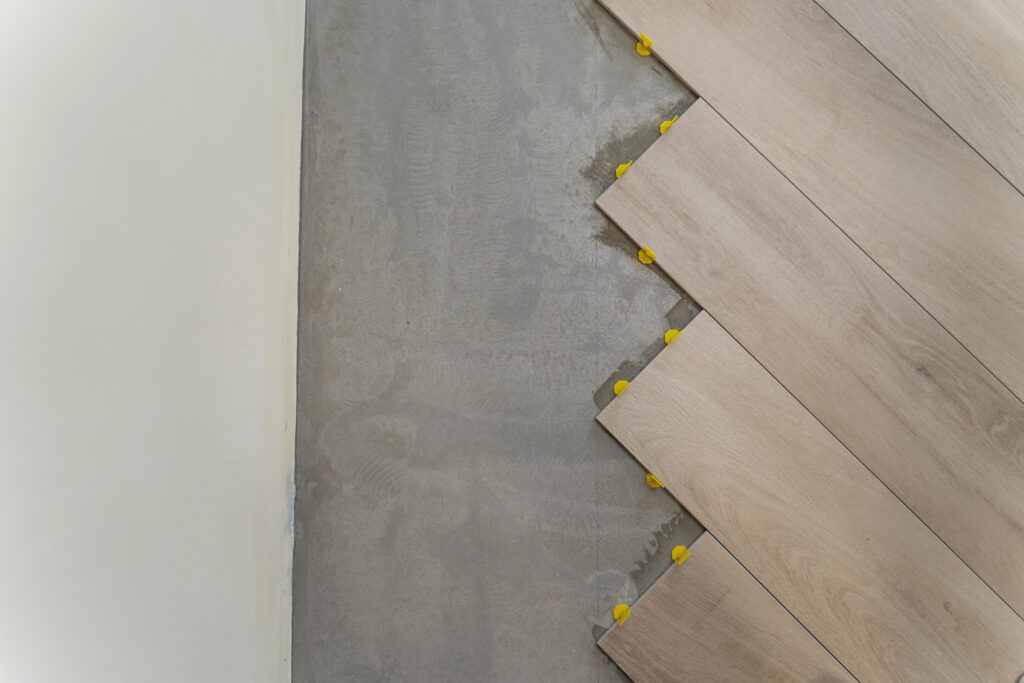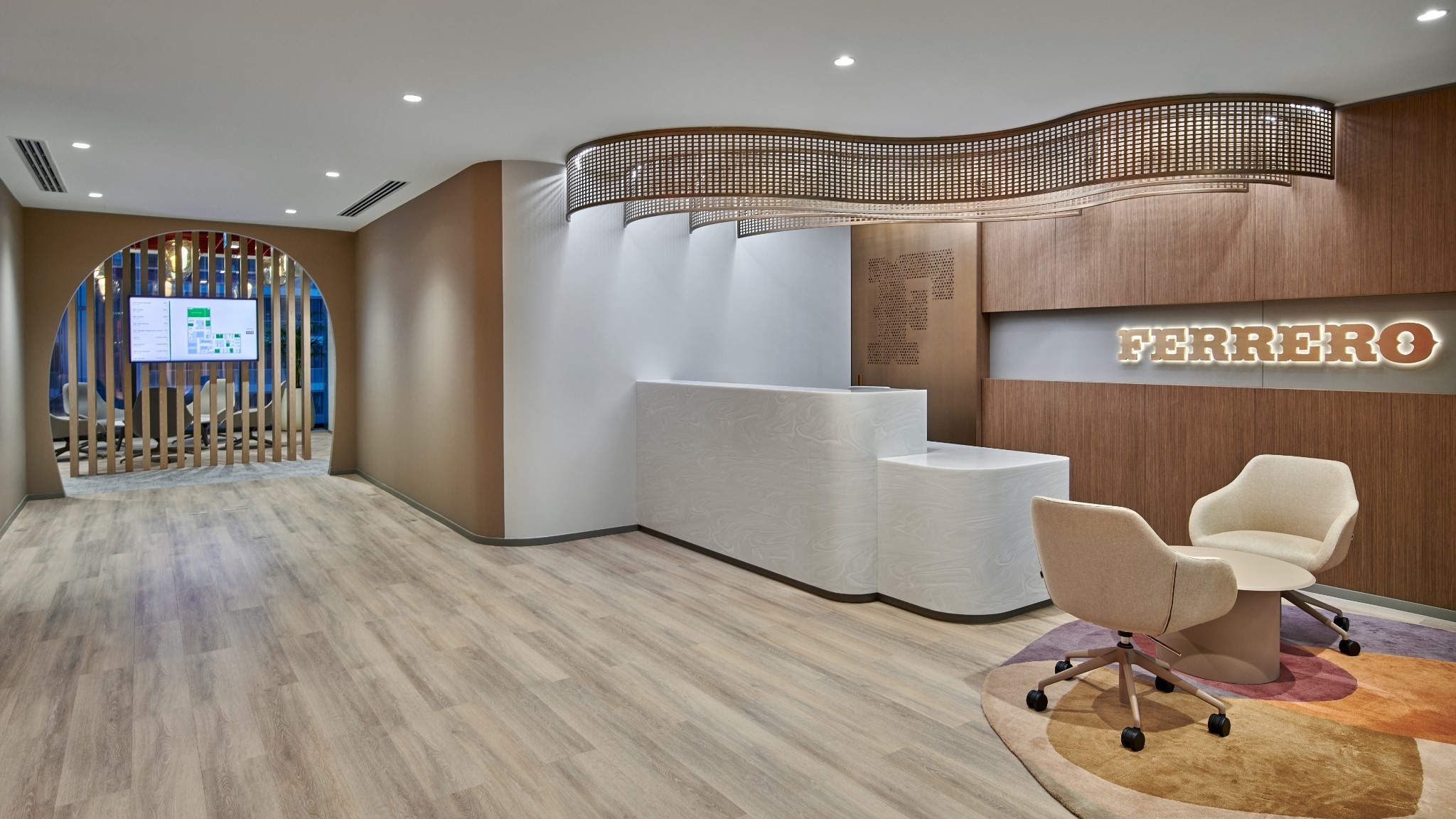Feature Image: Ferrero Rocher HQ; Photography by Chris Goldstraw
Flooring is one of the most impressionable design elements of an interior space. It’s not just what you walk on; it sets the tone for the entire room. But, beyond aesthetics, flooring plays a crucial role in the comfort and usability of a space. For example, carpet provides warmth and sound insulation, making it ideal for office spaces; while tiles or wooden planks are a more practical solution for homes and hotels. Thus, flooring selection is a multi-faceted job and one needs to weigh their options on various parameters to find the right match!
What is LVT Flooring?
LVT (Luxury Vinyl Tile) is a high-quality, durable, and versatile flooring option that mimics the appearance of natural materials like wood, stone, or ceramic tile. Made from multiple layers, LVT combines the resilience of vinyl with a realistic photographic layer that provides the visual appeal of luxurious materials. It is known for being water-resistant, making it ideal for areas prone to moisture like bathrooms and kitchens.

What is SPC Flooring?
SPC (Stone Plastic Composite) flooring is made from limestone powder, polyvinyl chloride, and stabilisers. A stone-based core gives it superior durability and strength compared to traditional vinyl flooring. SPC flooring is highly resistant to impacts, scratches, and water, making it ideal for high-traffic areas and environments prone to moisture, such as kitchens, bathrooms, and basements.

LVT Flooring v/s SPC Flooring: A Comparative Guide
LVT and SPC flooring are quite similar in terms of physical and functional attributes, so it can be confusing to choose between the two. So, here’s a detailed comparison between them.
- Material Composition
LVT flooring is composed of multiple layers of PVC vinyl, with a photographic layer that mimics natural materials like wood or stone, topped with a clear protective layer. SPC flooring, on the other hand, is made with a core of limestone and stabilisers, which gives it a rigid structure. This fundamental difference in composition is what drives many of the unique qualities of each flooring type.
- Strength and Longevity
LVT is durable and elastic, making it resistant to dents and scratches, while its flexibility allows it to absorb impacts better. However, SPC’s rigid core provides superior stability and strength, making it highly resistant to heavy impacts, scratches, and indentations. SPC is especially advantageous in commercial settings or high-traffic areas where the flooring is subjected to more wear and tear. This helps maintain its integrity even under pressure.
- Water Resistance
Both LVT and SPC are designed to handle moisture well, making them suitable for areas with heavy water usage. However, SPC’s 100% waterproof stone core gives it an edge in areas where extreme moisture is a concern. This added level of water resistance ensures that SPC flooring won’t swell, warp, or sustain damage even in the most humid or wet conditions.
- User Comfort
LVT is known for its softer, more cushioned feel underfoot, which provides greater comfort, especially when standing for long periods. This can be beneficial in residential settings where comfort is a priority. Conversely, SPC’s innate strength results in a firmer feel underfoot, which might be less comfortable for extended use. However, SPC offers better support and durability, making it more suitable for offices or industrial applications where the flooring needs to withstand heavy usage.

- Ease of Installation
LVT and SPC are designed for seamless installation, typically using a click-lock system that allows the flooring to be installed without glue or nails. LVT’s flexibility makes it more forgiving on uneven surfaces, allowing quicker and easier installation in spaces with minor subfloor imperfections. However, SPC requires a more levelled subfloor to ensure a smooth installation, which might necessitate additional preparation work. Despite this, the installation process for SPC is quite straightforward and efficient.
- Design Aesthetics
LVT flooring excels in offering a wide array of designs, textures, and colours, closely replicating the appearance of natural materials like wood, stone, or ceramic. The high-definition imaging and thicker wear layer in LVT provide a more authentic look and texture, appealing to those who prioritise aesthetics. SPC flooring, while also available in various designs, is catching up in design diversity but typically offers a slightly less textured feel due to its thinner top layer.
- Cost
LVT flooring is generally more affordable than SPC, making it an attractive option for budget-conscious homeowners who want high-quality, stylised flooring. However, SPC’s slightly higher cost can be justified by its enhanced durability, waterproof nature, and stability, particularly in areas that demand these features. Over time, the initial investment in SPC may pay off due to its longer lifespan and reduced maintenance costs.
How Do You Select Between LVT Flooring and SPC Flooring for Offices?
Whether you select LVT or SPC flooring for your space depends on a variety of parameters. However, for offices, LVT is the popular choice. Given the underfoot comfort, variety, and affordability make it the go-to choice for offices. Think about where you plan to install the flooring. If the area experiences heavy foot traffic or has a high chance of moisture exposure, you’ll need a flooring option that can handle those conditions. Drawing parallels on these fronts will allow you to make informed decisions about your space that will prove beneficial in the long run.

